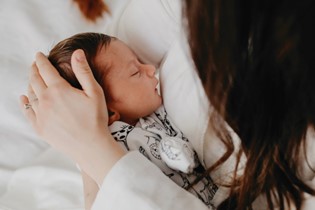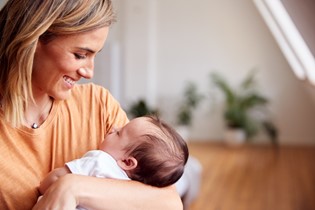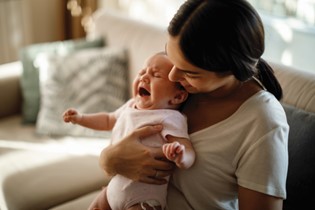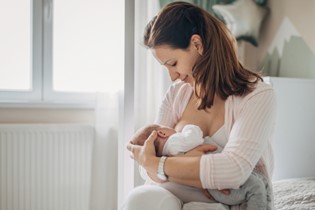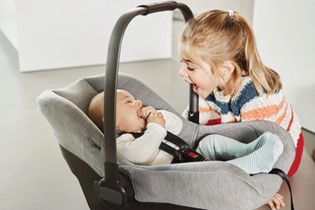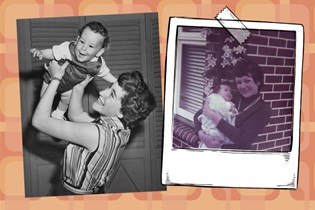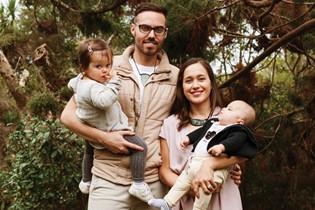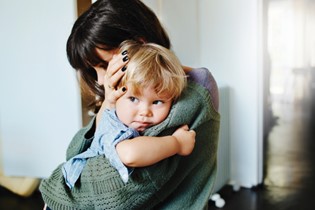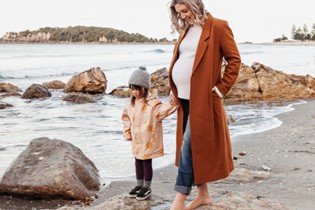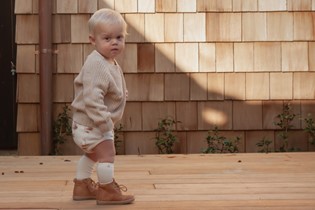BABY ON BOARD: how to choose the right carseat for your baby
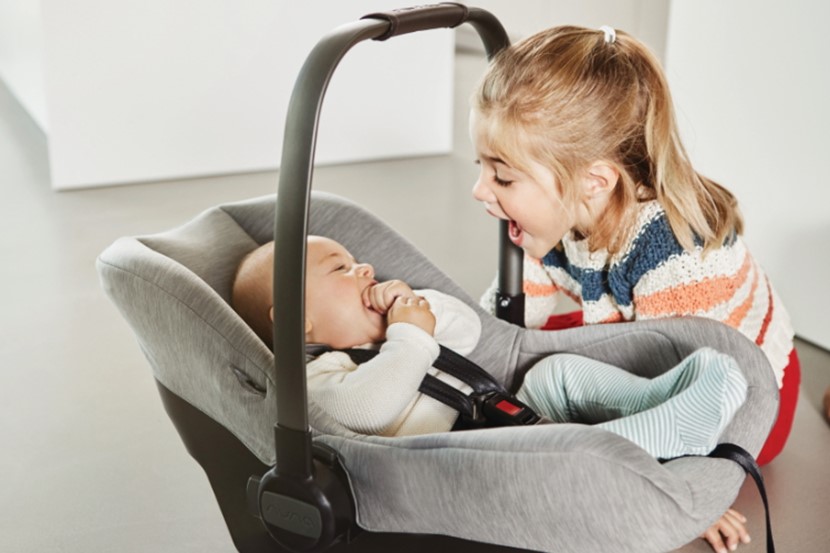
Danielle Beh gives us a jump start on choosing the right carseat for our children.
Choosing a carseat can seem like a complicated business, especially with all the different options out there. Let’s simplify the process by calling out the key things to consider.
CARSEAT OR CHILD RESTRAINT?
There are various types of carseats and you’ll probably be familiar with the different names – capsule, child restraint, booster seat – so it will help to get some clarity around what they are. The terms ‘child restraint’ or ‘carseat’ are names that cover every type of seat your baby or child will use in a vehicle. While ‘child restraint’ sounds like the more technical option, these two terms are completely interchangeable.
CARSEATS FOR AGES AND STAGES
Each stage of carseat that you move through will have a different name, but they all fall under the terms ‘child restraint’ and ‘carseat’. Here are the different types of carseats on the market:
Capsule: This is the name for a newborn carseat which has a handle and can be easily removed from the vehicle. These are used from newborn until the child outgrows the weight/height limits of the capsule. Depending on the growth rate of the child, they may comfortably fit a capsule until they’re six, 12 or 18 months old.
Convertible carseat: This is a child restraint which converts from rear-facing to forward-facing. Often these seats can be used from birth right up until a child is at school.
Harnessed booster or 3-in-1: These seats are forward-facing only and have a harness to secure the child. It is possible to remove the harness to convert the seat into a high-backed booster, and in some cases, removing the back is also an option. Doing so converts the seat to a half-booster.
Booster seat: These do not have a harness, instead they use the seat belt to secure the child, so should only be used for older children. There are two types of boosters:
High-backed booster: This seat has a back and a headrest so gives the child side-impact and head protection. The high-backed booster is the safer of the two types of booster seats.
Half-booster: This is only the base of a booster with no side or head protection. The half-booster should only be used for an older child and only if the child has outgrown any carseat with a back on it. Its only purpose is to give the child extra height to fit the seat belt – it has no other safety benefits.
WHICH CARSEAT IS APPROPRIATE FOR YOUR CHILD?
New Zealand law states that a child must be in a child restraint which is “appropriate for that passenger”, but how do you know what’s appropriate? Basically this means a child fits within the carseat’s specified weight, height and/or age limits. Displaying these limits on the child restraint is a legal requirement, and these should be easy for you to check. These will guide you to the range of carseats that are appropriate for your child. Once you’ve narrowed this down, you can start looking at how each of these seats will protect your child by assessing each of the following considerations:
Will your child travel rear-facing or forward-facing?
These are two terms you’ll become very familiar with. Each position comes with different considerations which can impact your child’s safety and comfort, as well as space in your vehicle.
Rear-facing
This is when your baby travels facing the back of the vehicle and it’s the safest position for a young child. An infant must travel in a rear-facing direction. It’s best practice for a child to stay in a rear-facing carseat until they’re at least two years old. If possible, you should keep your child rear-facing until they’ve outgrown the rear-facing limits of their carseat. These limits may allow a child to rear-face until they’re aged around four to six years old. When a child is travelling in a rear-facing position, their child restraint provides them with much better protection from the forces of a frontal crash – which is the most common type of crash. The shell of the carseat supports their head, neck and spine and reduces the risk of severe injuries.
THINGS TO CONSIDER WHEN BUYING A REAR-FACING CARSEAT
How much leg room do you need in the front of your vehicle? One of the most important things to be aware of when choosing a rear-facing carseat is that its length in your vehicle will push the front seat forward, which then reduces the leg room of the person sitting in this front seat. Even if you have a large car, this is still likely to happen. To avoid restricting the leg room of the driver, in most cases a rear-facing child restraint is installed behind the passenger seat, but you will also need to consider how much leg room the passenger needs. This consideration may impact your choice of child restraint, so it’s worth checking the fit of child restraints in your car before you make your decision.
Is there enough space for a rear-facing restraint to be installed at the correct angle?
When travelling rear-facing, a baby must be in a safely reclined position that ensures their head does not drop forward onto their chest. The purpose is to avoid blocking their upper airways and, in turn, the flow of oxygen to their brain. For this reason, it’s vital to have enough space behind the front seat to allow the rear-facing restraint to be installed at the necessary angle for this.
Forward-facing
Once a child is in a forward-facing position, the child restraint will no longer take up as much space in the vehicle as a rear-facing restraint does. This can improve the comfort of the person travelling in the front seat and is often one of the main reasons that a family turn their child forward-facing. Be cautious when using this as the reason, as you don’t want to do so too early.
CONSIDER THIS BEFORE SWITCHING TO A FORWARD-FACING CARSEAT
Does your child still sleep in the car?
Before you change your child’s seat from rear-to forward-facing, consider the change in your child’s position in their seat. A forward-facing child restraint is much more upright than a rear-facing option, so if your child sleeps in the vehicle, in a forward-facing carseat, their head will fall forward. Some forward-facing carseats have a function which puts them in a slightly reclined position but even in this position, these seats are usually too upright for a child to sleep with their head positioned comfortably against the headrest. There’s nothing that can be done to change this – it’s not possible to use an accessory of any kind to hold their head in position.
SAFE AND SECURE INSTALLATION
If you have carseats installed already it’s well worth your time to pause and make sure the carseat is correctly installed and set up for your child. If you can move your child’s carseat with your hand, imagine what the force of a crash will do to that movement. It’s a simple picture to create, and with this image in your mind, it’s easy to understand why a securely installed child restraint is necessary. When referring to carseats, the word ‘secure’ is quite specific. ‘Secure’ means “less than 2.5cm of movement”. There is a simple way to check if yours is securely installed: when you hold the side of your installed carseat and try to move it from side to side – it must not move more than 2.5cm. In New Zealand, the statistics of incorrectly and unsafely installed carseats are high and carseats that don’t comply with the “less than 2.5cm of movement” rule play a large part in these statistics.

GETTING THE RIGHT 'FIT'
Not all carseats ‘fit’ all cars. When we refer to the ‘fit’ of a child restraint, we’re referring to how securely a child restraint fits that particular vehicle. Child restraints all have a different shape to them, and all vehicle seats are manufactured with different contours, plastic mouldings and slopes. It’s like fitting a jigsaw piece into a puzzle. If the edges don’t match, the puzzle pieces don’t fit together, and the logic is the same for a child restraint and a vehicle seat. If these puzzle pieces don’t match, then a child restraint will not be able to be installed securely. Checking if a carseat can be installed safely in your vehicle is another necessary consideration to make when deciding on the most appropriate restraint.
The safest carseat is the one that is installed securely. Even if you have two restraints side by side, one expensive with a lot of features, and the other a cheaper, more basic version, the safest of these two is the one that is installed securely – regardless of their cost or features.
READ THE MANUAL
Reading the manual that comes with your child restraint is essential! To comply with the law, you must be using your carseat in line with its manufacturer’s instructions. Every child restraint has different rules; sometimes there are only slight variations between them, and in other cases, they’re very different. Just make sure you follow the instruction manual that came with your particular carseat to ensure it’s appropriate for your child’s weight and height, and that you’re installing it correctly.
SEEK HELP
Don’t let child restraints overwhelm you. Your common sense can still be trusted. If something doesn’t make sense to you, the best thing to do is seek out more information. Using your carseat correctly will reduce the chances of your child being injured in a crash – taking the time to get this right is worthwhile.
If in doubt, trained child restraint technicians (CRTs) can advise on correct and safe carseat use. Find your local CRT by visiting sittight.co.nz and following the Find a CRT menu tab. They can be especially helpful when installing a carseat for the first time, so you can watch and learn.
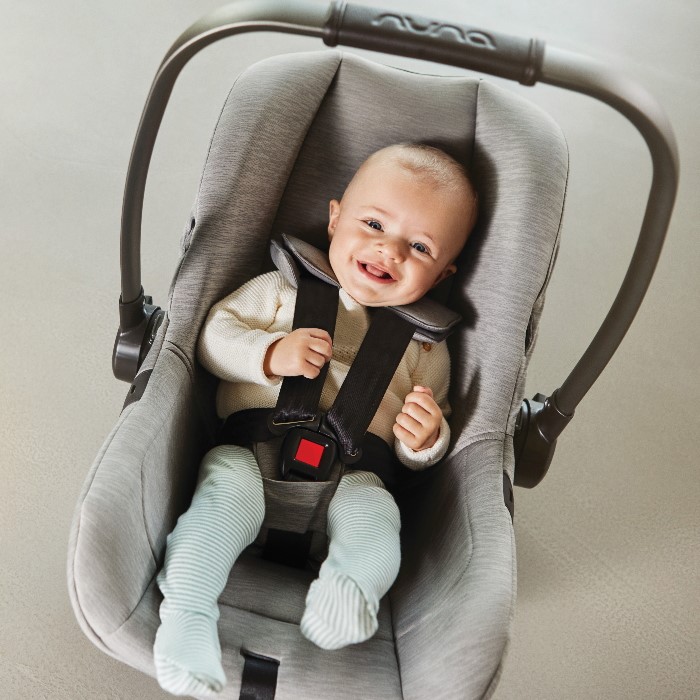
Danielle Beh is a child restraint technician and owner of SitTight Child Restraint Education. She’s passionate about improving child passenger safety. Find her on Facebook and Instagram @Sittightchildrestraintedu or sittight.co.nz.

AS FEATURED IN ISSUE 50 OF OHbaby! MAGAZINE. CHECK OUT OTHER ARTICLES IN THIS ISSUE BELOW


